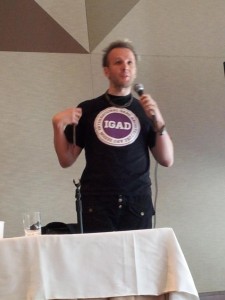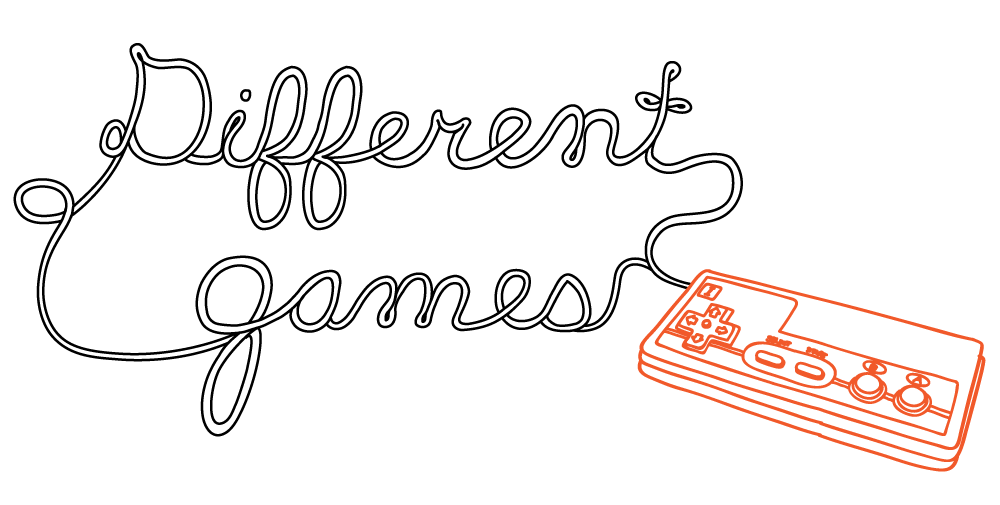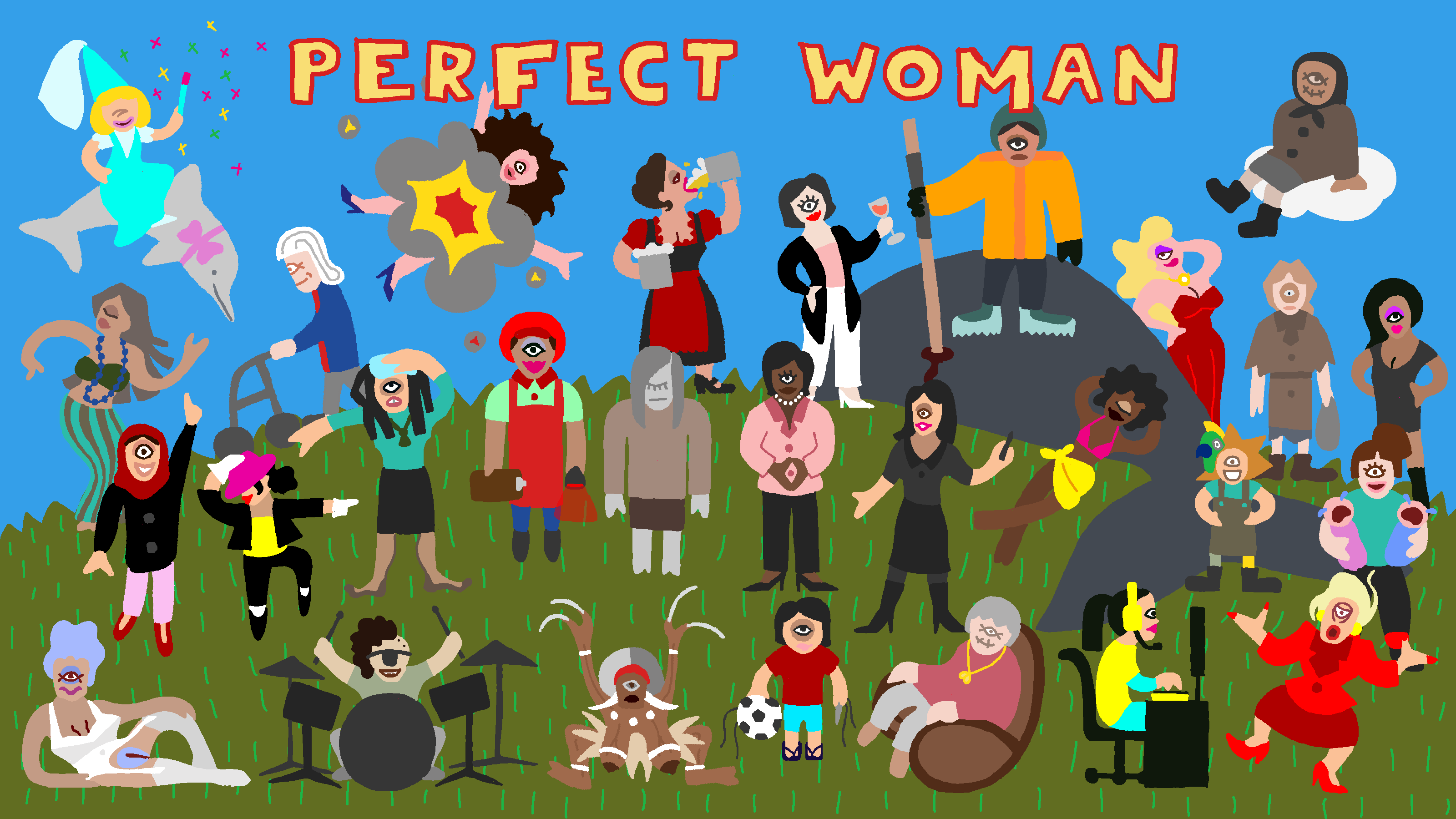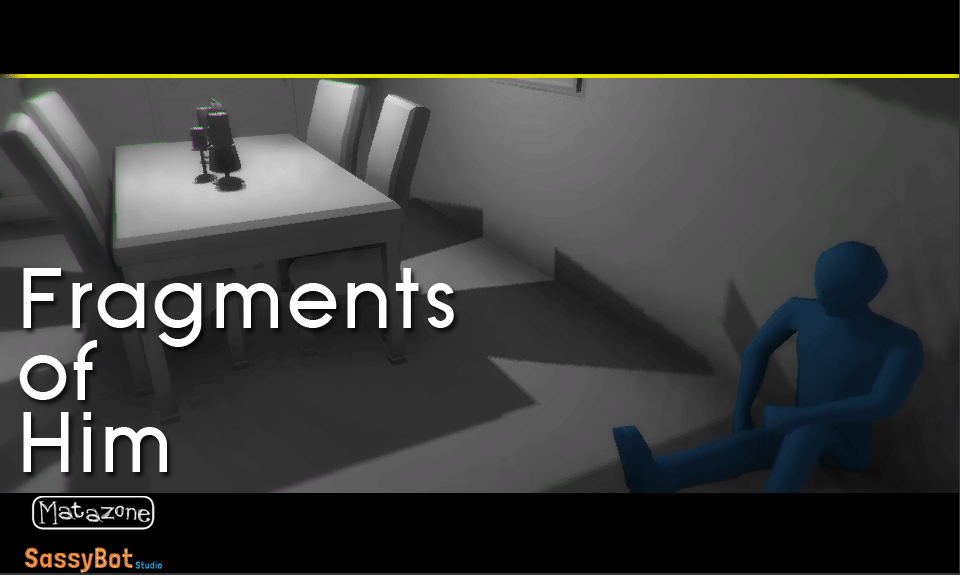Trigger warning: at some points this article discusses rape.
(It also contains spoilers for Far Cry 3).
What happens when a game that is intended to be satire doesn’t get interpreted that way, and what does this tell us about the games industry?
“My goal was to create something that people could analyse”
This article looks at a range of topics related to the story and narrative in Far Cry 3, primarily from the perspective of gender politics, but also in terms of consistency between narrative design intentions and gameplay mechanics. The writer, Jeffrey Yohalem, encourages close examination of the game, saying in an interview with Penny Arcade: ‘My goal was to create something that people could analyse. Analysis is fun because there are many interpretations. If there’s just one interpretation then it’s not worth analysing.’ Yohalem has given several interviews and a presentation on his views of what was created in Far Cry 3, and this article examines his intention for the game and how successful he was at conveying this to the audience, where problems arose, and whether the problems he faced are related to only this title or to an industry-wide issue.
The story of Far Cry 3 has been reviewed as containing stereotypical characters and a predictable narrative progression. Yohlem argues that this is a misunderstanding, and says in his GDC talk that:
The story itself is a straight-faced satire of pop-cultural products like Avatar and clichéd video game plot devices. A straight-faced satire seems to support the very thing that it satirises and only exaggeration and hidden clues point to the work’s true meaning.
Yohalem is arguing that the exaggeration is part of what should tip off the player that they are really playing a satire.
In researching this article, I have read around twenty reviews of Far Cry 3, and they seem to be split about 80:20 between the story being plain and uninteresting (‘there’s a spiritual, mystical theme running through this third game that seeks to support Jason’s apparently superhuman abilities. While this does help suspend disbelief, it can’t change the lack of a meaningful journey for him.’ – Edge Magazine) and it being an exciting blockbuster Hollywood-style thrill ride (‘The story, complete with a few twists and drug-addled “is this real?” moments, certainly pulled me in and kept me pushing onwards to see how f***ed-up things could possibly get.’ – Strategy Informer). The satirical nature of the story was not mentioned in any of the reviews. The closest mention of this that I found was from The Escapist, ‘it can feel like Far Cry 3 is taking a few ideas from other popular action-adventures and trying to put a darker, edgier twist to them – and it can come across as a tad melodramatic as a result.’
With this tad melodramatic plot in mind…
Jacyn Brody and date rape
What did you think of the rape of the main character in Far Cry 3?
You’re playing as an increasingly powerful female modern-day warrior, Jacyn Brody, who’s seen her brother killed and overcome this through violent action. Then she meets the leader of a friendly tribe. The tribe wants to rid the island of pirates led by the man who killed Jacyn’s brother. The tribal leader is attractive and, frankly, a bit weird: he claims Jacyn is the chosen warrior who will lead the tribe against the pirates.
About halfway through the story comes the rape.
The leader of the tribe gives you, Jacyn, a drug. You hallucinate, then wake up under the leader, who is topless and smeared with blood. He’s having sex with you. To add to the level of creepiness, his whole tribe has been watching while he rapes you.
So… Date rape. Jacyn is drugged and recovers consciousness while having sex. Some might view this a bit more than ‘a tad melodramatic’.
Strangely, Jacyn seems okay with this, after the act. She doesn’t even seem surprised, even though they had never even kissed before her hallucination. She gets up and gives a speech about how she will lead the tribe.
Is the rape okay because she doesn’t seem bothered by it? Surely it’s too late by that point: no matter how sexy the guy, he doesn’t have the right to assume that she would want to have sex with him just because he is good looking. Perhaps this is Ubisoft trying to play out a female rape fantasy in a video game form? Those do exist, but I doubt I’m alone in finding it a bit unsettling when it is presented in a ‘straight-faced’ narrative, even one that is claiming to be satire.
It’s hard to imagine this scenario happening in a film without audiences questioning it at least a little, and Jacyn’s lack of surprise is hard to believe. Was this intended to be a clue that the game was a straight-faced satire? It seems bizarrely risky to use rape as a tool to do that.
Except, for people unfamiliar with the game, you’re not playing as the female ‘Jacyn’, you are playing as the male ‘Jason’, and the tribal leader is a beautiful woman: we are playing in a male rape fantasy, apparently.
Does this make it okay? It is certainly different in terms of cultural weight, given that not a single reviewer of the game has mentioned this.
Yohalem’s claim is that the exaggeration in the game is a way of indicating that the story is a satire. The non-consensual sex act performed on Jason is certainly extreme, but it does not seem to have flagged the game’s story as a satire for any of the professional reviewers. In an industry where narrative dissonance (the gap between the in-game character’s likeable personality and the player’s often-psychopathic actions) is the average rather than an exception, and where poor writing and hyper-masculinity is notoriously common, it cannot be too surprising that a the rape of a man by a beautiful woman is not seen as a flag of satire, or even worthy of mention.
Hyper-masculinity as a flag of satire
The problem with satire is that it needs to have clues to highlight when it is not actually in earnest. For Yohalem, who has previously worked on Assassin’s Creed: Brotherhood, the hyper-masculine character appears to be considered enough of a flag that the story was intended to be satire. Jason’s exaggeration, such as his aptitude for violence and lack of surprise that he would be mounted by a beautiful woman as soon as his defences were lowered, is a wholesale recapitulation of an American hero stereotype that has existed at least since 1893 when Frederick Jackson Turner constructed a story of the Wild West that, however illusory it may have been, formed a compelling myth around which a nation in need of a unique identity formed itself. In Turner’s view, the character of America was shaped by the frontier, and most notably by male individuals who chose to go out into the wilderness and tame the land. This concept of an American conqueror bringing civilisation, leadership, and order to wild tribes while defeating the forces of chaos, should be familiar to any players of Far Cry 3; what is harder for players to see is where Turner’s extreme vision of a solo American hero is subverted.
The blame for the unnoticed satire might not rest entirely with the writing; the mechanics of the game encourage the player to accept ludicrous extremes as normality. The PC Gamer review says of some of the crafting mechanics in the game:
If you’re going to ask players to buy into a system so hilariously removed from its origins in real-world logic, it had better work.
With the mechanics of the game exaggerated beyond real-world standards, the narrative would have to have reached even more ludicrous levels to flag it as satire for the player.
But does it do this? Arguably it does. Beside the rape of Jason, which is unquestioningly presented as a male fantasy both in the game and by Yohalem in his GDC talk (discussed later) the game’s menu screens are a reference to psychological tests, and the loading screens have quotes from Alice in Wonderland. The enemies in the game span the full range from standard psychopaths, through rapists, and on to weapons and slave traffickers. The violence is brutal and very visceral. The player can punch sharks, wrestle crocodiles, and be pecked to death by a very angry relative of an emu. On the side of the friendly characters there is a Timothy Leary-esque drug addict and a ‘group of obnoxiously privileged, ankle-tattooed friends’ (GameSpy) who are, in their own way, a less noticeable but nonetheless still extreme stereotype that viewers of the last thirty years of slasher horror films will immediately recognise as suitably beautiful fodder the hero may or may not have the time to save. Jason himself turns from a adrenaline junkie who cowers at conflict into a killer in a matter of moments, and rapidly matures into an unstoppable force of nature. This transformation is miraculous and the game recognises this by draping it with a narrative of spiritual destiny and magical tattoos. To support this journey, we are also given mystical temples, drug induced spirit quests, and World War II letters that descend into a bizarre comedy. In this light, it is easy to support Yohalen’s claim that the game’s story exaggerates everything as a clue to its satirical nature.
Why doesn’t Far Cry 3 work as a satirical art form?
Which only further highlights the question: why doesn’t Far Cry 3 work as a satirical art form? In all of the reviews of the game, no one has recognised the satirical nature of the story. The problem may not be with Yohalem’s writing at all, but in the nature of the medium he is working.
All of the above stereotypes exist commonly in many other famous games, such as the Call of Duty series, Uncharted, Devil May Cry, Prototype, Halo, Infamous, Metal Gear Solid, or Resident Evil, to name only a few. In the latter case, the Resident Evil series began with live-action cutscenes that were just earnest enough to possibly be taken as a genuine attempt at a good plot, and the ambiguity about the intentions of the writers has remained unresolved as the subsequent games appear to take their own mythology very seriously even while the twists become ever more ludicrous. The common player-character in these games is a white, heterosexual, male with short hair and a talent for extreme acts of violence. This isn’t always the case, but the balance is certainly not even as close to equal as in the movie industry, which also has notable problems in this area. Even as this stereotype is acknowledged by games developers, it still continues to dominate new titles. Against this overwhelming balance of stereotypical action game heroes in melodramatic situations, it is hard to see how any exaggeration by Yohalem was likely to inform the player that the story of Far Cry 3 was supposed to be taken not as a generic video game story, but instead as a commentary on generic video game stories.
What does it say about the games industry that we cannot recognise when an experienced writer at a major studio is trying to satirise the stories we have heard for all of our life? It is fair to say that Yohalem has indeed fulfilled his intention of creating a story with ridiculous extremes, but it seems that the games industry’s default setting for its characters is so far into hyper-masculinity that even a concerted effort by Yohalem wasn’t able to bring up any questions about his sincerity.
In an interview with Penny Arcade, Yohalem says that:
The story is itself something that can be solved, like a riddle. […] What makes me sad is that people don’t engage with playing the riddle, trying to solve the riddle. It’s like a scavenger hunt where people aren’t collecting the first clue.
There are problems with the riddle of Far Cry 3. Even if it is a satire of the hyper-masculine fantasy usually shown in video games, the sub-plot regarding Keith (a friend of Jason’s) seems strange. Keith has been kept locked up and, it is suggested, raped by his male captor. The dismissal of the suffering of the male-on-male rape seems out of key with the tone of the rest of the game: both Keith and Jason agree to never talk about it, sending an unpalatable message about the topic. Was that intended to be a satire of how sex and gender are treated in games, and of how male sexual assault is often dismissed? It is hard to work out what the meaning of this riddle was intended to be.
Conforming to exploitation
On the subject of sex in the game between Jason and Citra (the tribal leader), Yohalem said the following during his GDC talk ‘Method Acting and Interactive Storytelling in Far Cry 3’:
We have two sex scenes in Far Cry 3. One seems to conform to exploitation, the other critiques exploitation.
Yohalem’s justification here is that, in the first incident of sex (the rape of Jason by Citra) this is a male fantasy of a weak tribal woman being lured into giving her body to Jason, or possibly, as he describes it, a ‘damsel in distress’ stereotype that Jason comes in to rescue from her besieged situation. As argued above, this interpretation of the event is at best morally dubious. The second incident of sex requires the player to choose one of two endings, and so already half of the players that reach this point are likely to not see this sequence. Given that many estimates say that only 8% of players ever finish games at all, it could then be argued that at best 4% of players are going to see the second incident of sex. If this is the point at which the critique is presented, then only a very small fraction of players are going to see it. In this scene, Citra has sex with Jason, presumably consensually, and then she stabs him in the heart after he orgasms. She says that she is now pregnant with his child and that the child will save her tribe. This is intended to be a reversal of the male fantasy, where Citra is shown to really be the exploiter all along. In the alternative ending, Citra dies without this being revealed. In both endings, Citra’s acts do not fit with Yohalem’s intention for the scenes, and their placement in the story means that few players would ever see them. If the moment of Citra murdering Jason was crucial to understanding the puzzle of Far Cry 3, then it was placed in a way that few players would reach and situated in an already undermined moral position.
“It isn’t about creating a morality play”
Mark Thompson, the lead designer of Far Cry 3, told VG24 that the game:
Doesn’t judge whether [extreme violence] is right or wrong, […] it isn’t about creating a morality play. We simply take someone who hasn’t killed before and force them to kill, in order to save their own life and then the lives of their closest friends.
When compared to Yohalem’s ambitions for creating a space for analysis of the game industry’s views on violence, sex, and masculinity, Thompson’s statement that the game is not a morality play demonstrates that there may have been conflicting views on the message that the game was intended to deliver. Without the full integration of Yohalem’s satirical intention into the game’s systems, it becomes less surprising that inconsistencies may have occurred in the game’s narrative.
Reviewers and players alike did not question the riddle of Far Cry 3, and indeed they did not even notice that the riddle existed. In Eurogamer’s retrospective of the game, Rich Stanton writes:
The truth is that every fibre of Far Cry 3 exults in Jason’s fantasy, and so do you.
When rape, shark punching, and graphic violence are a fantasy that is not noticed for its extremity, and that no straight-faced satire can exaggerate an empowerment fantasy to the point where it becomes obviously satirical, the message for the games industry is dire: we have a problem with gender, and specifically hyper-masculinity, both in our characters and our gameplay mechanics. These values are so entrenched that they are accepted and ignored, even when sending very socially dangerous messages about serious topics such as sexual consent. Like all fantasies, empowerment narratives have their place in games (though the moral messages of consent should be handled with more care), and I am not arguing for their complete removal: they are a valid form of entertainment, just as much as the film Die Hard is a classic narrative of both class and male empowerment that shouldn’t be banned because of its own issues with gender politics, which were representative of the time. In the film industry, alternative narratives do exist and are easy to find in very popular mainstream titles. When hyper-masculine empowerment fantasies are the unquestioned normative mode of discourse then the games industry needs to start analysing itself. With such a narrow bandwidth for expression, we can see that satire is indistinguishable from the real thing.
The lesson from Far Cry 3 is not that the game’s story was a failure, but that the games industry itself is failing at telling diverse stories.






